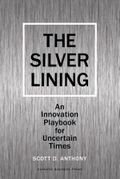Book Review: The Silver Lining by Scott D. Anthony

Within The Silver Lining, there were several chapters that I’ve literally bookmarked for future reading as they resonated with some of my own thinking and findings about innovation:
(1) Companies need to figure out how to surprise and delight their customers with the performance of their products. However, even the most demanding customers are really only looking for “good enough” performance — companies that try to add to “overshoot” by adding too many features and too many options to a product are wasting valuable time and resources. At the end of the day, technology only has to be “good enough” to get the job done. As Anthony points out in Chapter 3 (“Refeature to Cut Costs”), one technique to refocus teams on “good enough” is Kano, a Japanese management technique developed by Noriaki Kano at the Tokyo University of Science in the late 1970s.
(2) It’s possible for any manager to become a more innovative thinker. In Chapter 8 (“Drive Personal Reinvention”), Anthony points out the ways that many top innovators excel by being able to question, observe and experiment more effectively than their peers. The good news is that an “innovator’s DNA” is not simply inherited — only 25% of an individual’s capacity for innovation is inherited, the other 75% comes from experience. Anthony mentions 7 specific ways to become a more innovative manager. Sometimes it’s just a matter of asking better questions.
(3) People typically think that only start-ups and emerging companies are capable of launching disruptive innovations, but large companies are just as capable of launching disruptive innovations. In Chapter 7 (“Learn to Love the Low End”), Anthony gives big, mega-corporations a playbook for learning to innovate at the low-end of the market, which is typically where all the disruptive innovation activity occurs. At the end of the chapter, he gives a list of 10-12 major, FORTUNE 500-style companies that have launched disruptive innovations — including two of my personal favorite examples, Dayton Hudson (Target) and ING (ING Direct).
(4) As intelligence and innovation know-how becomes increasingly more distributed around the globe and on the Web, even large companies with massive R&D departments need to become more adept at tapping into the talent around them. In Chapter 6 (“Share the Innovation Load), Anthony maps out potential strategies for medium- and large companies to build distributed networks of innovation to help them become more innovation. Companies like Eli Lilly, Netflix and P&G are all leaders when it comes to bringing in new insights about innovation from external sources.
(5) Even in 2009, during the low point of the worst economic downturn since the Great Depression, there are innovative companies emerging in new areas. In Chapter 9 (“What’s Next for Innovation”), Anthony catalogues some of the great, up-and-coming companies that are turning established business models upside down. Some of the companies are well-known even to casual readers (e.g. Skype, Facebook, Amazon Kindle), but some of the companies I had quite honestly not even been aware of — like EnerNOC and QlikTech.
In a time of economic uncertainty, it’s far too easy to give up on innovation and re-allocate budgetary resources elsewhere. However, as Scott Anthony argues, the constraints of the current period are exactly the right time to begin a program of disruptive innovation. If you’re already familiar with the principles of disruptive innovation, The Silver Lining is a remarkably quick read (weighing in at only 180 pages) that can then later become a quick reference resource for launching a new corporate innovation program.




